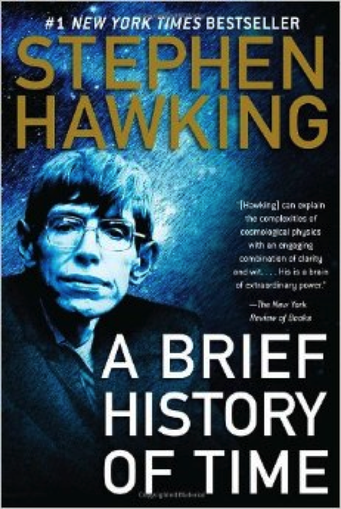
Author: Stephen Hawking
Genre: General Non-Fiction
# Pages: 204
Date Published: 1988
5-Star Rating: 4
Would you recommend it?: Yes
I picked up this book as soon as I saw the trailer for The Theory of Everything, a new movie based on Stephen Hawking’s first wife’s memoir about their life together. I figured that while understanding the mind of Stephen Hawking would probably be impossible, reading his incredible book on physics and the scientific understanding of a very complex universe would be a good place to start. It took me about two weeks to finish the book between classes. Because it is so dense, it is hard to pick it up for a few minutes here and there, so I had to wait until I had time to pay attention to every word.
I would recommend this book not only because it is interesting, but also because it is important. Even for science fans, A Brief History of Time would prove challenging, as it attempts to answer such diverse questions about the nature of the universe as black holes, the Big Bang, the end of time, the Uncertainty Principle. Even for less science-minded individuals, though, these are questions that capture the imagination. As an added bonus, for those science fiction fans going to see Interstellar in the coming weeks, this book articulates many of the laws of physics that the astronauts mention in passing throughout the film. The chapters are relatively short, making it is easy to read a chapter and move on later. Hawking also cuts through the sometimes dense, technical material with personal anecdotes and humor, keeping the reader from losing focus. The graphics and pictures are also especially helpful to a reader who might not have done so well in math and science classes.
Although the book is written “in a language we can all understand,” it might still prove a stretch for those who are not inclined to reading about very abstract mathematical concepts. Readers should be warned that although A Brief History of Time is fascinating, it isn’t a light read by any means. Regardless, this book is still a New York Times Bestseller, and it is considered one of the most important books, for the common reader, at least, about these complex theories. Anyone looking to understand these ideas should give it a try.
Review by Molly Saint, A&S '15

 RSS Feed
RSS Feed
